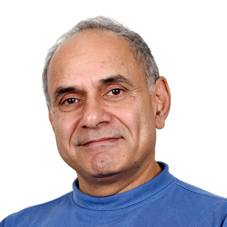Parmjit Jat
Research Synopsis
Cell lines are an invaluable tool for studying complex processes and diseases. Cell culture systems to study prion biology are limited to a few cell lines susceptible to either mouse-adapted or sheep prion strains, with none yet described able to stably propagate human prions.
We aim to develop cells that can propagate human variant and sporadic Creutzfeldt-Jakob disease prions by using a “silencing-reconstitution strategy” that recapitulates the approach used to make mouse models of human prion disease. This will enable us to develop a robust highly sensitive, automated cell culture assay for human prion infectivity.
Recent work has suggested prions themselves are not directly toxic but lead to the production of a toxic species. To identify the toxic species, we have developed a multi-parametric high content imaging assay of neurotoxic phenotypes. We will use this assay to examine toxicity through the course of a prion infection, isolate the toxic species and investigate the mechanism of action.
 |
OPERA confocal micrograph of primary neurons grown in 96-well plate treated with RML brain homogenate for 72h or left untreated. |
Highly infectious prions are not directly neurotoxic
Iryna Benilova, Madeleine Reilly, Cassandra Terry, Adam Wenborn, Christian Schmidt, Aline T. Marinho, Emmanuel Risse, Huda Al-Doujaily, Michael Wiggins De Oliveira, Malin K. Sandberg, Jonathan D. F. Wadsworth, Parmjit S. Jat, John Collinge
Proc Natl Acad Sci U S A. 2020 Sep 22; 117(38): 23815–23822. Published online 2020 Sep 8. doi: 10.1073/pnas.2007406117
A systematic investigation of production of synthetic prions from recombinant prion protein
Schmidt C, Fizet J, Properzi F, Batchelor M, Sandberg MK, Edgeworth JA, Afran L, Ho S, Badhan A, Klier S, Linehan JM, Brandner S, Hosszu LL, Tattum MH, Jat P, Clarke AR, Klöhn PC, Wadsworth JD, Jackson GS, Collinge J. Open Biol. 2015 Dec;5(12):150165. doi: 10.1098/rsob.150165. PMID: 26631378
Identification of clinical target areas in the brainstem of prion-infected mice.
Mirabile I, Jat PS, Brandner S, Collinge J. Neuropathol Appl Neurobiol. 2015 Aug;41(5):613-30. doi: 10.1111/nan.12189. Epub 2015 Apr 23. PMID: 25311251
Identification of a gene regulatory network associated with prion replication.
Marbiah MM, Harvey A, West BT, Louzolo A, Banerjee P, Alden J, Grigoriadis A, Hummerich H, Kan HM, Cai Y, Bloom GS, Jat P, Collinge J, Klöhn PC. EMBO J. 2014 Jul 17;33(14):1527-47. doi: 10.15252/embj.201387150. Epub 2014 May 19. PMID: 24843046
Activation of nuclear factor-kappa B signalling promotes cellular senescence.
Rovillain E, Mansfield L, Caetano C, Alvarez-Fernandez M, Caballero OL, Medema RH, Hummerich H, Jat PS. Oncogene. 2011 May 19;30(20):2356-66. doi: 10.1038/onc.2010.611. Epub 2011 Jan 17. PMID: 21242976
Conditional immortalization of freshly isolated human mammary fibroblasts and endothelial cells.
O'Hare MJ, Bond J, Clarke C, Takeuchi Y, Atherton AJ, Berry C, Moody J, Silver ARJ, Davies DC, Alsop AE, Neville AM, Jat PS. Proc. Natl. Acad. Sci. USA 2001; 98: 646-651.
Recovery of spatial learning by grafts of a conditionally-immortalised hippocampal neuroepithelial cell line into the ischaemia-lesioned hippocampus
Sinden JD, Rashid-Doubell F, Kershaw TR, Nelson A, Chadwick A, Jat PS, Noble MD, Hodges H, Gray JA. . Neuroscience 1997; 81: 599-608.
Direct derivation of conditionally immortal cell lines from an H-2KB-tsA58 transgenic mouse
Jat PS, Noble MD, Ataliotis P, Tanaka Y, Yannoutsos N, Larsen L, Kioussis D. Proc. Natl. Acad. Sci USA 1991; 88: 5096-5100.
 Close
Close


